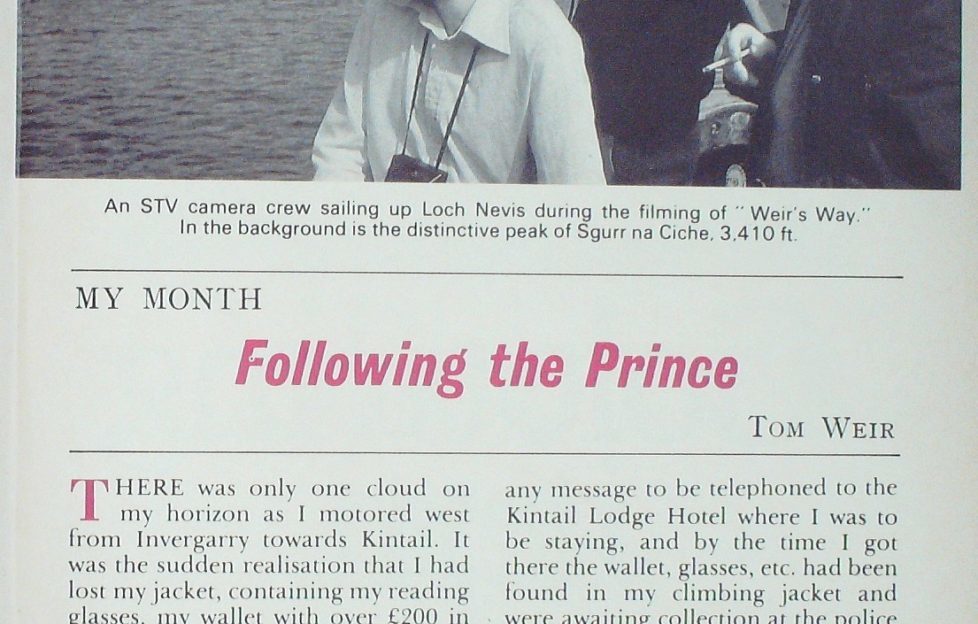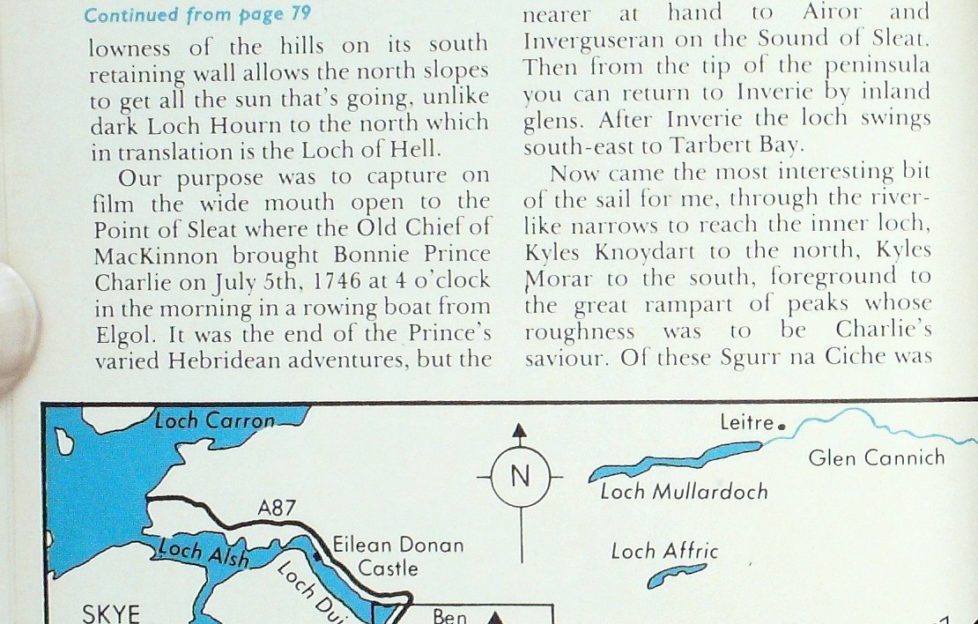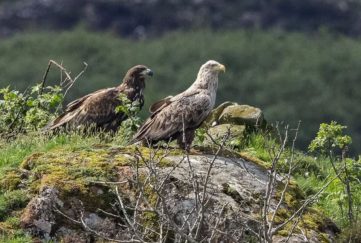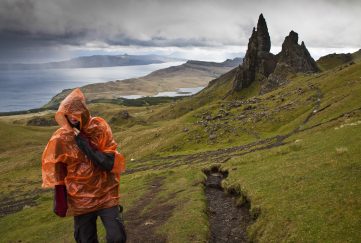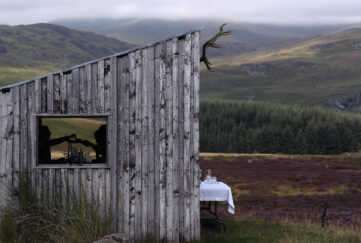Tom Weir | Following The Prince Part 2
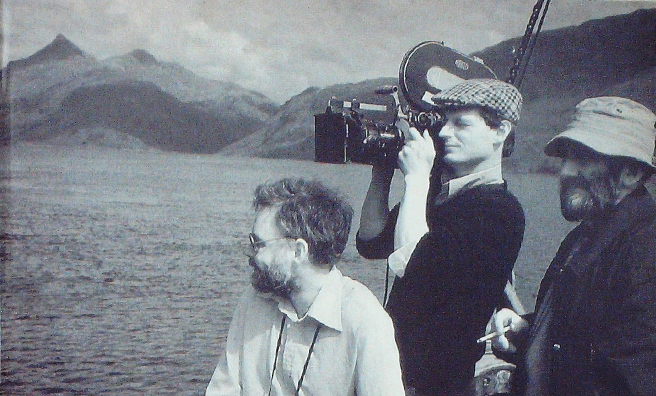
Escaping government troops by climbing through Knoydart, Bonnie Prince Charlie hid in the very place his father’s troops fought the Battle of Shiel…
On that occasion, though, the self-styled James VIII of Scotland and III of Britain was nowhere near Scotland.
He had gone to his 17-year-old bride in Italy, Princess Maria Clementina Sobieska, and Bonnie Prince Charlie was a result, born in 1720 and now, like his father, anxious to escape the consequences of his actions.
Lord George Murray, ablest of Bonnie Prince Charlie’s commanders at Culloden and elsewhere, could have told him about the battle of Glen Shiel which took place below the peak of Sgurr nan Spainteach, the peak of the Spaniards.
This battle came to life for me when the Achnangart shepherd showed me some bullets which his father had picked up in a leather bag which he had found in a peat hag below the trenches dug by the Spaniards who are commemorated forever in the Gaelic name of one of the “Five Sisters.”
“Yes,” said Dolin MacMillan the shepherd, “the Spaniards are said to have retreated up the hill. I believe it was the first time that mortars had ever been used in warfare, and they were demoralised. About 200 of them went over the top to come down Glen Lichd making for the ships, which had been captured and so were they.”
“This battle, like Culloden,
should never have been fought.”
Retreat would have been better, then they could have chosen the time and place for a surprise attack. The circumstance’s leading to the battle were this.
The Marquis of Tullibardine and the fifth Earl of Seaforth had sailed from France with 300 Spanish troops to hold Eilean Donan Castle and spearhead a Scottish Rising against George of Hanover.
At the same time 5000 Spanish troops led by the Duke of Ormonde were to land on the west coast of England to equip an army of 30,000 Jacobites.
The Risings in Scotland and England were to coincide, disorganise the government and put James on the throne.
The main body ol Jacobites in Kintail, totalling 1,100, including Lochiel, Clanranald, and later Rob Roy were waiting at Eilean Donan or in camp nearby when bad news reached them. Storms had shattered the troopships on Cape Finisterrr.
The Battle Commanders were advised to embark their Spanish troops for home and disperse the clansmen.
Too late however. Even as the warning despatches were being read, three English frigates sailed into Loch Alsh and bombarded the 13th century castle into ruins after capturing its garrison and stores.
The spread of this news slopped further support coming from loyal clans, but the Jacobites already gathered stayed on through the month of May.
When they heard that a Hanoverian force was advancing on Kintail from Glen Shiel they moved, taking positions on both sides of the river on 9th June, with Lord George Murray on the south bank, and Tullibardine on the north, with the Spaniards entrenched below to provide covering fire in the expected attack.
Murray took the brunt of the mortar fire first and repelled three charges, without help from the demoralised Spaniards, then the heather caught fire forcing his men to retreat.
Now it was the Seaforth Mackenzies who took the exploding mortars, and when their chief fell badly wounded they began climbing uphill and by nightfall the Jacobites were nearly on top of the 3000 ft. hill.
More!
Read more from Tom!
We have an extensive archive of Tom Weir’s great columns for The Scots Magazine, and we’re slowly but surely getting them published digitally for new generations to enjoy.
To see the columns we have online so far, click here.


